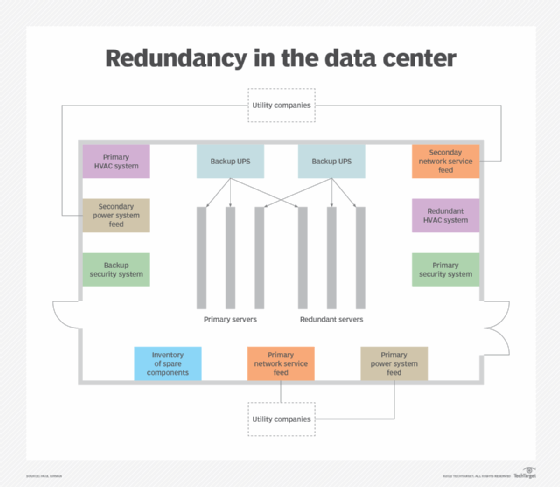Your Rights to Redundancy If Company Goes Bust: UK Employee Protections
Your Rights to Redundancy If Company Goes Bust: UK Employee Protections
Blog Article
Examining the Interaction Between Company Redundancy and Organizational Versatility for Future Development
In the dynamic landscape of today's business world, the elaborate relationship between company redundancy and business flexibility emerges as an important factor for continual development and success. Firms often encounter the challenge of striking a fragile equilibrium in between preserving a degree of redundancy to mitigate risks and promoting adaptability to react swiftly to the ever-evolving market demands.
Relevance of Business Redundancy
Business redundancy is a critical aspect that improves business strength and mitigates operational threats. By integrating redundancy actions within the business framework, business can much better stand up to unanticipated interruptions and fluctuations in business atmosphere. Redundancy acts as a strategic buffer, allowing firms to adjust and respond properly to unanticipated challenges without jeopardizing necessary operations.
One key facet of the value of firm redundancy is its role in making certain connection during times of dilemma. When confronted with unexpected changes or emergency situations, repetitive systems, sources, or workers can tip in to keep crucial functions and stop widespread disturbances. This connection not only safeguards the business's reputation and client trust however also minimizes financial losses and operational downtime.

Techniques for Organizational Adaptability

One more vital technique is spending in modern technology and infrastructure that can sustain versatility and scalability. Applying digital tools, automation, and data analytics can enhance procedures, enhance efficiency, and supply beneficial understandings for educated decision-making. Furthermore, creating adaptable business structures that allow for fast adjustments to market characteristics and consumer needs is vital for remaining affordable in a quickly evolving setting. By proactively identifying prospective disruptions and chances, companies can proactively flourish and adjust in an ever-changing service landscape.
Harmonizing Redundancy and Adaptability
Accomplishing a harmonious equilibrium in between operational redundancy and organizational flexibility is extremely important in browsing the complexities of a vibrant service atmosphere. Redundancy within a business supplies a safeguard, making sure continuity and security in procedures. Nonetheless, an unwanted of redundancy can cause inefficiencies and impede adaptability to changing market problems. On the various other hand, organizational flexibility enables companies to respond immediately to outside disturbances and seize brand-new possibilities. Striking the ideal balance between redundancy and adaptability is a fragile procedure that requires a deep understanding of the organization's goals, sector dynamics, and danger tolerance.
To attain this equilibrium, companies need to carry out normal analyses of their procedures to recognize locations where redundancy is essential for danger mitigation and where adaptability can drive development and development. Carrying out adaptable structures, promoting a culture of constant discovering and enhancement, and encouraging open interaction across all levels of the company are essential techniques to integrate redundancy and adaptability effectively. By aligning these 2 important elements, business can position themselves for sustainable development and success in an ever-changing company landscape.
Study on Adaptation Success
In examining instances of successful business adaptation, it comes to be evident that the interaction in between functional redundancy and versatility is a specifying consider forming resistant services. One engaging study is that of Netflix. At first a DVD rental solution, Netflix showed amazing versatility by transitioning into a streaming system when digitalization interrupted the industry. By strategically buying innovation and web content creation, Netflix not just grew but endured in a rapidly advancing market. Another standout example is Amazon. Starting as an on the internet bookstore, Amazon continuously adjusted its organization version, expanding right into diverse industries such as cloud computing and expert system. This flexibility permitted Amazon to remain in advance of rivals and satisfy changing consumer demands. Last but not least, Adobe provides a significant image of successful adaptation. The business shifted from marketing software licenses to a subscription-based design, making sure persisting profits streams and enhanced consumer involvement. These instance studies underscore the significance of operational redundancy combined with organizational adaptability in fostering long-lasting development and competitiveness.
Building Durability for Future Development
Structure strength for future development requires a critical placement of operational procedures with market characteristics and emerging trends. Firms need to adjust to altering environments by cultivating a society of versatility, technology, and continuous renovation. Durability includes not just recovering from troubles but likewise this proactively planning for future challenges. One crucial facet of structure durability is buying durable risk monitoring approaches to reduce potential interruptions. This consists of scenario preparation, branching out supply chains, and developing backup prepare for different backups (who pays redundancy money).
Furthermore, fostering solid relationships with stakeholders, such as clients, workers, providers, and the area, is necessary for weathering unpredictabilities and maintaining trust fund and support during rough times. Effective interaction and openness play a vital duty in structure durability, as they assist facilitate and align assumptions collaboration in navigating unpredictabilities.
Additionally, companies need to focus on learning and advancement initiatives to upskill employees and furnish them with the needed tools to adapt to transforming situations. By investing in their labor force, firms can enhance their adaptability and agility, ultimately enhancing their durability for lasting future growth.
Conclusion

In the vibrant landscape of today's business globe, the intricate partnership in between business redundancy and business flexibility emerges as a critical factor for sustained development and success. Business commonly deal with the challenge of striking a fragile redundancy pay if company goes bust balance in between maintaining a level of redundancy to alleviate risks and promoting adaptability to respond quickly to the ever-evolving market needs.To attain this balance, firms require to conduct normal evaluations of their operations to determine locations where redundancy is required for threat reduction and where versatility can drive advancement and development.In conclusion, the interaction in between business redundancy and organizational versatility is essential for future growth. Building resilience via a combination of redundancy and flexibility will certainly make certain that firms are prepared for the challenges of the future.
Report this page